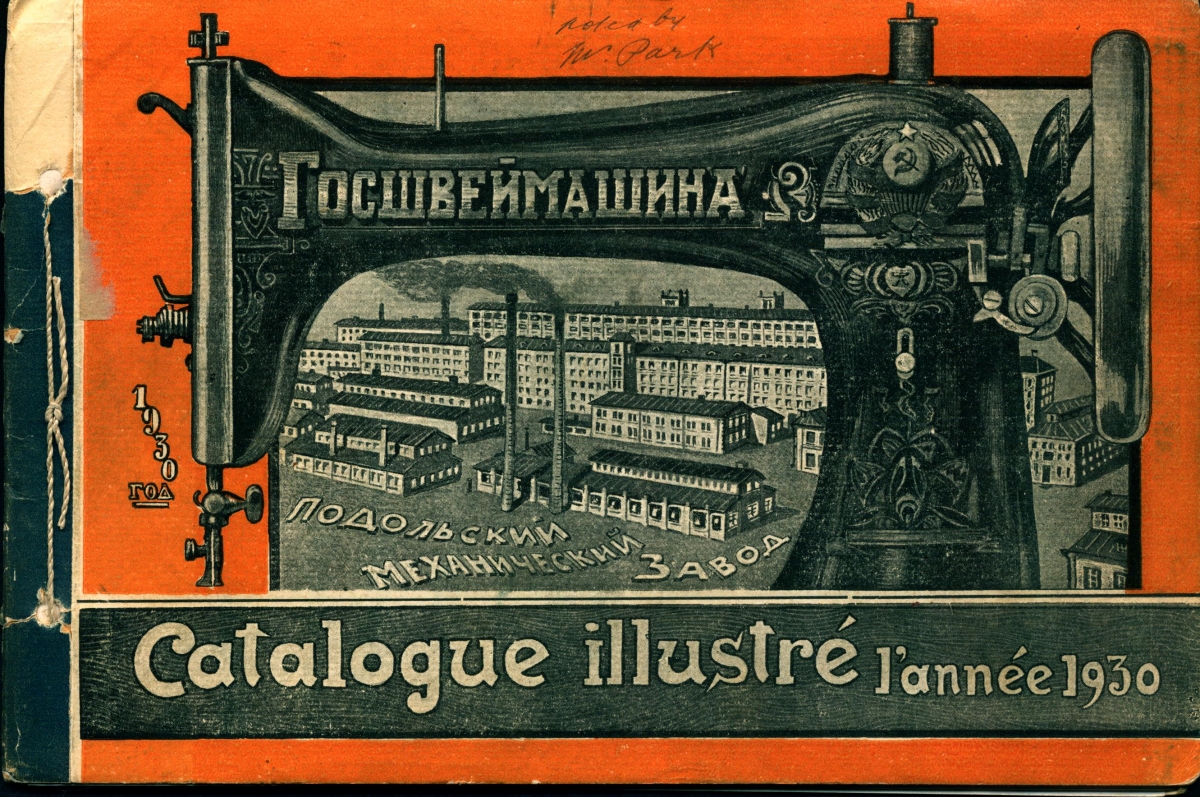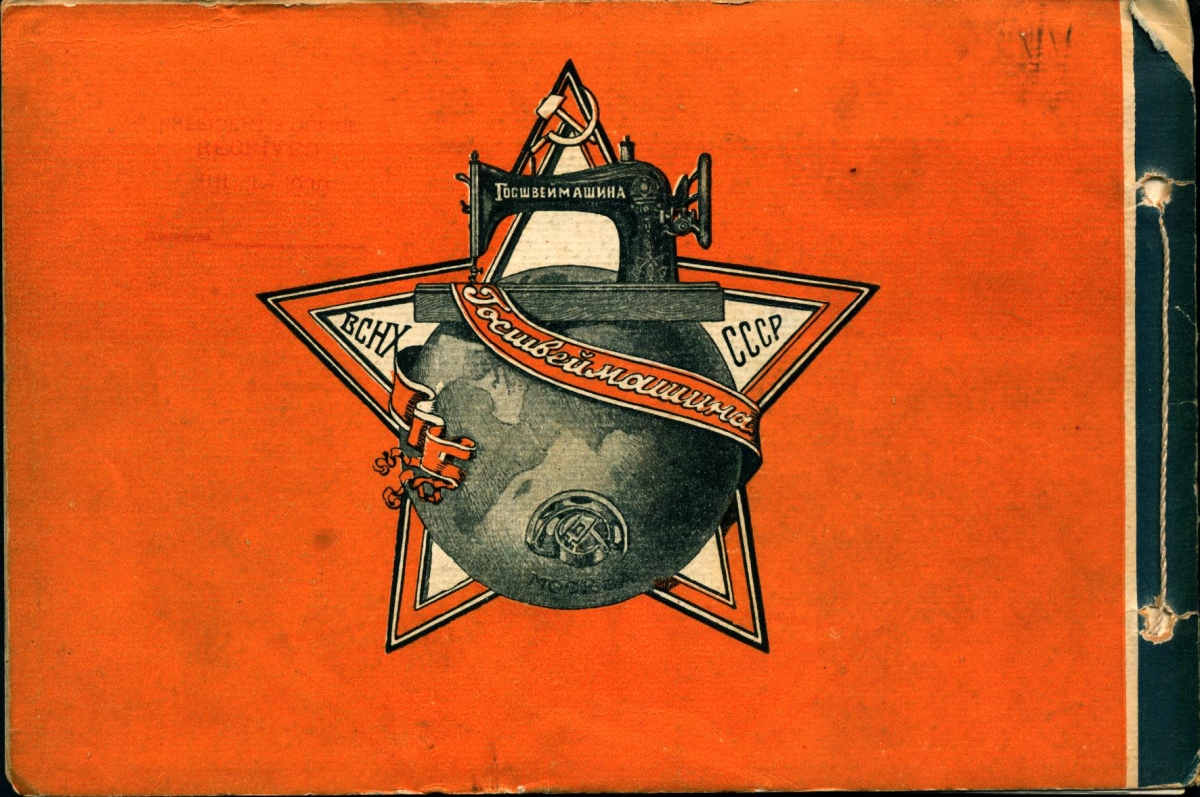A rather unusual Trade Catalog recently wandered into my workflow, one that had lagged behind the cohorts of some past accession. This particular "stray cat" presents the cataloger a formidable linguistic challenge, judging the booklet simply by its cover. The halftone illustration immediately draws the eye from the bold image of a sewing machine in the foreground to a sprawling factory in the distance. Below it, a textual banner presents the title in French:Catalogue illustré : l'année 1930. However, the mark of the manufacturer (Госшвеймашина) as well as the caption for the industrial complex (подольский Механицеский Еавод) both appear in Cyrillic. This looks like a 1930 Trade Catalog for sewing machines made in Russia for the foreign market.

On the inside, we find thirty-four pages that serve to confirm this hunch and to broaden our scope. We find presentations of sewing machines (manual and motorized), replacement parts, and accessories. We notice a wide variety of needles, some of which are fashioned for stitching and knitting, but others crafted for medicine and even phonographs. Last but not least, we discover an offering of men’s and ladies’ bicycles. A novelty to some, the inclusion of these vehicles may come as no surprise to other readers who are aware that early manufacturers of bicycles adopted successful technologies from the sewing machine and firearms industries, specifically the use of interchangeable parts.

Price list for interchangeable bicycle parts.
A basic bibliographic description – author, title, publisher, and pagination -- begins to take shape for this Trade Catalog, based on the French text and Russian colophon. The tricky part remains: how to create access points in an English-language OPAC (online public access catalog) for names printed with Cyrillic characters? They may “look like Greek to me,” but The American Library Association and the Library of Congress provide Romanization Tables for transliteration, which can easily be checked against the output of an online utility such as Google Translate. Through this process of domesticating the foreign names found in the Catalogue illustré, the manufacturer is rendered as Gosshveymashina and the location as Podolʹsk.
Searching these terms together on the internet leads to “a postcard of the Podolʹsk factory” built by the Singer Company. The resemblance is striking. Could it be the same plant as the one on the front cover of our Trade Cat? And what can be inferred from the picture on the back cover (below)?

Where in the world was this catalog distributed?
Could this illustrated catalog possibly have circulated at the Exposition Internationale of 1930 in Liège, Belgium? And is this notion, supported by the use of French text, substantiated by the intriguing image of a sewing machine atop a globe? Curiouser and curiouser, I welcome any insights the readership may offer on the Catalogue illustré : l'année 1930.
Alice Hanes is the Technical Services Librarian, Published Collections Department, at Hagley.
